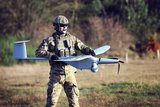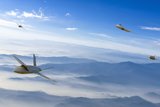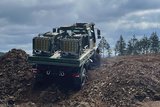Training Transformation a CAE Perspective (Sponsored)
It Started with the Pilot Shortage
Over the past decade, air forces around the world have become concerned over a growing shortage of qualified pilots. While not a new problem, it has reached an acute stage in many services, with airlines seeing a similar situation in their pilot ranks.
The U.S. Air Force has reported under-producing the number of fighter pilots required to meet sustainment needs. Additionally, retention rates for fully trained pilots have been below target for years, despite efforts aimed at reversing the trend. This is a consistent concern across many military services.
To help meet these dynamic production requirements during austere resource environments, armed forces programs must implement training transformation efforts across all battlespace domains.
Status Quo Versus the Digital Shift
Current training approaches have remained virtually unchanged since the Second World War. A cohort of students enter training together, study the same material at the same time, and do the same exercises in the same order, at the same pace, with the expectation that everyone will complete training at the same time. Lasting as long as 12 months, trainees are on site for the duration of the program. The process repeats indefinitely and consistently.
Computers, the internet, social media, video chat and interactive digital gaming have changed how we communicate, interact, learn, play, and consume information. Synthetic environments (including Augmented, Virtual, and Mixed Reality) significantly improve engagement through learner immersion. Advances in Artificial Intelligence (AI) and Machine Learning (ML) are improving the ability to harness data to uncover actionable information and insights. Adaptive learning approaches, competency-based training frameworks, and continuous improvement processes also increase training system capacity and performance at scale.
The past few years have introduced significant changes in how we work, interact and learn, forcing rapid adaptation and adjustment. In response, virtual meetings, work-from-home, and online schooling have expanded in capability and frequency. When done carefully and deliberately, distance education has proven effective and efficient in improving learner outcomes.
Generational Considerations
Today’s students are digital natives, accessing and consuming information and conducting relationships via the internet and digital technology. Traditional learning structures and programs do not fully address the needs of this generation. New approaches to training are needed to provide efficient, effective and affordable training options.
Opportunities and experiences comparable to civilian trade schools, universities and the job market will also enable more creative and relevant training.
A growing body of empirical evidence demonstrates that focusing on the needs of individual students, rather than a class, can help increase student throughput. Further benefits include a reduction in time to train, as well as an increase in the capacity of the overall program.
Leverage Technology
Advances in educational technology have introduced new opportunities to improve training at scale. Shifting from expensive training platforms to less expensive platforms helps address affordability concerns. More importantly, technology allows providers to learn and refine activities they may not be able to rehearse in live situations. Synthetic environments provide the opportunity to experience and perform in situations too dangerous to reproduce in live action.
In addition to supporting safety, immersive training can also offer a secure, classified and controlled environment, while improving assessment options.
Proven solutions to complex training problems exist, combining competency-based, student-centric focus with innovative technologies. Adaptive digital learning tools, AI, ML, and a continuous improvement process enabled by ongoing data collection and analysis are just some of the tools available to improve the training process.
Change can be disruptive, but organizations can mitigate disruption through the right planning and execution. Armed forces traditionally excel here – assessing a situation, considering the risks, evaluating the alternatives, deciding on a course of action and moving forward, adapting where necessary.
Apply Methodology
The first step in addressing the training transformation challenge is understanding the needs and objectives of specific military training programs and developing a plan.
A comprehensive needs analysis is critical, considering adaptive models of instruction, assessing distance education, examining instructor training and support, including evaluation strategies, and shaping course structure.
Updated training methods and the integration of synthetic environments are vital in improving readiness as an individual, a crew or team, and as a member of a coalition allied force.
Resource Properly
Successful training transformation efforts are showing a positive return on investment. Initiatives such as the USAF’s Pilot Training Next program effectively blend learning science and educational technology to improve training system performance. Further examples are emerging in academia and industry, at scale and with demonstrated improvement.
Successful training transformation is an iterative process. CAE is passionate about training and committed to building and employing solutions that address the learning challenges of today and tomorrow. Leveraging our experts worldwide, we will foster a common understanding of the what, the why, and the way forward.
More from Industry Spotlights
-
![The future is here: Sixth-gen air dominance]()
The future is here: Sixth-gen air dominance
How RTX is equipping the military airspace – for today’s fleet and tomorrow’s fight.
-
![De-Risking the Future: Manufacturing Certainty for Unmanned Systems]()
De-Risking the Future: Manufacturing Certainty for Unmanned Systems
How strategic manufacturing partnership solves the industrialisation triad — Scale, Compliance and Cost — for hyper-growth defence tech innovators.
-
![Battlefield mobility, made in the UK]()
Battlefield mobility, made in the UK
How does Britain ensure that we can preserve the lives of our soldiers and allies – now and in the future – with homegrown innovation and resilient domestic manufacturing? At Pearson Engineering, we are proud to be a central part of the answer to this increasingly important question.
-
![Strengthening Baltic defence capabilities]()
Strengthening Baltic defence capabilities
How Latvia is bolstering its territorial defences, industrial capacity and international cooperation with Dynamit Nobel Defence’s SKORPION2 Remote Mining System.
-
![Barco’s vision to trust: from past to future]()
Barco’s vision to trust: from past to future
Barco’s story is one of constant evolution enabling more immersive, reliable, and future-ready training experiences.
-
![How are next-generation ejection seats helping pilots when they need it most?]()
How are next-generation ejection seats helping pilots when they need it most?
The ACES 5 ejection seat from RTX’s Collins Aerospace introduces new, innovative and patented technologies to help save lives.
























